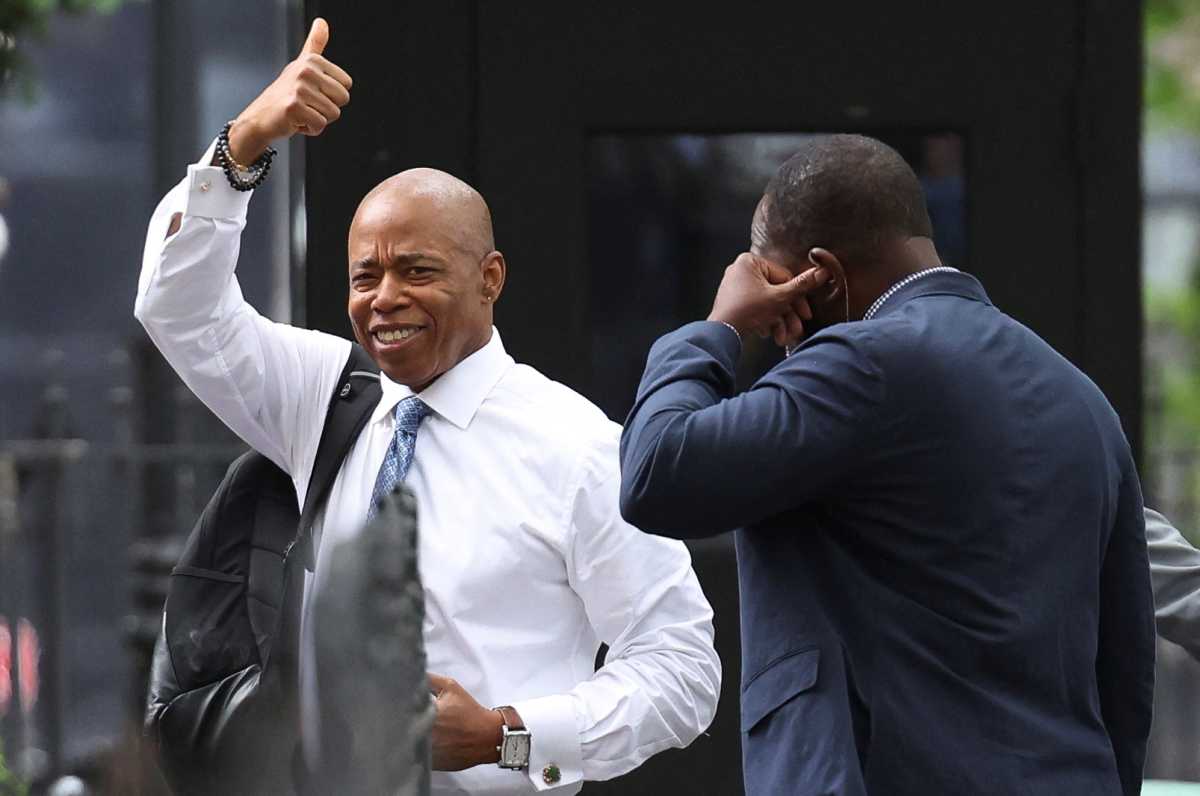A documentary film about Ethiopian Emperor Haile Selassie I is making the rounds and arrived at the Schomburg Center in Harlem recently. Commissioned by South African television for a series spotlighting the legacies of seven great Africans, “Twilight Revelations Episodes in the Life & Times of Emperor” introduces a 58-minute documentary that “explores and analyzes watershed events during the reign of the Ethiopian emperor.”
Eight years in the making, the film is directed by Ethiopian, filmmaker Yemane I. Demissie.
Incorporating archival footage and photographs and interviews re-examining the imperial administration and the last such in its 3,000-year history of monarchy, the film focuses on a small portion of the legacy that is attributed to one of Africa’s greatest leaders.
Through the eyes of numerous individuals who played important roles in the monarchy — attorneys, ministers of education, information and planning, an army general, a Supreme Court justice, members of the royal family, the Emperor’s favorite pilot, parliamentarians, high-ranking civil servants, and members of the imperial household.
“The observations and narratives of these individuals shed new light on the personality, leadership style and humanity of the last and final Ethiopian emperor.”
History states that Tafari Makonnen was the 10th child born to Ras (or prince) Makonnen who advised Emperor Menelik II. After his father’s death, the emperor elevated the young prince to greatness by naming him governor of a province. He was the heir to a dynasty that traced its origins to the 13th century. By tradition his heritage could be traced back to King Solomon and Queen Makeda, Empress of Axum, known in the Abrahamic tradition as the Queen of Sheba. In 1930 he was crowned the 225th emperor of Ethiopia and adopted the name Haile Selassie (power of the Trinity) and in that role led his country for more than 50 years. Haile Selassie is a defining figure in both Ethiopian and African history.
He visited more than 60 countries garnering favorable recognition from the international press.
He made many international visits to Europe, Asia, North and South Americas. And was a guest of five US leaders before the presidency of Gerald R. Ford. Rare footage of Ghanaian President Kwame Nkrumah’s visit to Addis Ababa provide the only lens to state visits from other African leaders visiting the country referred to in the Bible as Abyssinia.
The document while lauding Selassie’s global travels presented extensive footage of his visits with Queen Elizabeth II, China’s Mao Tse Tung and a Brazilian president are vividly depicted. While in Brazil in 1960, a coup attempt led by one of his imperial guards and university students made worldwide news. The dissidents demanded a constitutional monarchy with genuine democracy, fundamental economic and agricultural reform as well as a concerted effort to end the chronic poverty of most Ethiopians.
The film shows the Emperor’s disbelief that such was the case in Addis Ababa. The leader was a trusted colleague. When asked for comments, he responded that he knew what the press released and nothing more. He ignored many of the speculations that he had been betrayed and returned home. He immediately quashed the disruptions. But that may have been the beginning of the end. Although the coup attempt failed, the negative spotlight on his regime seemed to have fomented dissatisfaction and disapproval of his rule.
“As times changed and his citizens demanded more political freedom and democracy, he grew more conservative. At the same time, poverty and illiteracy were taking their toll on the Ethiopian people. Having lost touch with political reality, the emperor refused to surrender his power and was overthrown.”
In the film his grand-children reflect on the last time they saw their famous grandparent. According to them — and the film projects — a blue Volkswagen exiting the palace grounds allegedly with the emperor in the backseat in 1974.
The film fails to show his visit and impact in Jamaica where a large community revered him as “Lion of Judah, King of Kings, Elect of God.”
The fact his charisma and near-mythic image inspired believers in the Caribbean to rally to his teachings and messages and inspired the Rastafarian faith in his honor is not presented in this document. Nowhere are the Rastafarians noted or acknowledged. Neither is the fact, Marcus Mosiah Garvey, Jamaica’s first national hero proclaimed that from the African continent a king would emerge. “Look to the east for the crowning of a Black king, he is the redeemer for the days of deliverance are near,” Garvey prophesied.
As a matter of fact, although the film seems to overdose on the last emperor of Ethiopia’s visits to England, it fails to show footage of his visits to Trinidad & Tobago and Haiti in 1966.
I asked filmmaker Demissie about this blatant oversight. His response was that the South African television producers gave him limited time — nine months — to complete the project.
I also asked why he did not interview Jamaican diplomat Dudley Thompson who attended many meetings with Selassie.
Demisse told me he hoped to talk with Thompson and planned to incorporate the Rastafarians in his follow-up feature.
Unfortunately, Thompson died last year at age 95 while on a visit to New York.
Currently, Demissie is producing “The Quantum Leapers: Ethiopia 1930-1975,” a six-part documentary series focusing on Ethiopian social, artistic, intellectual, political and cultural history between 1930 and 1975.
Catch You On The Inside!























